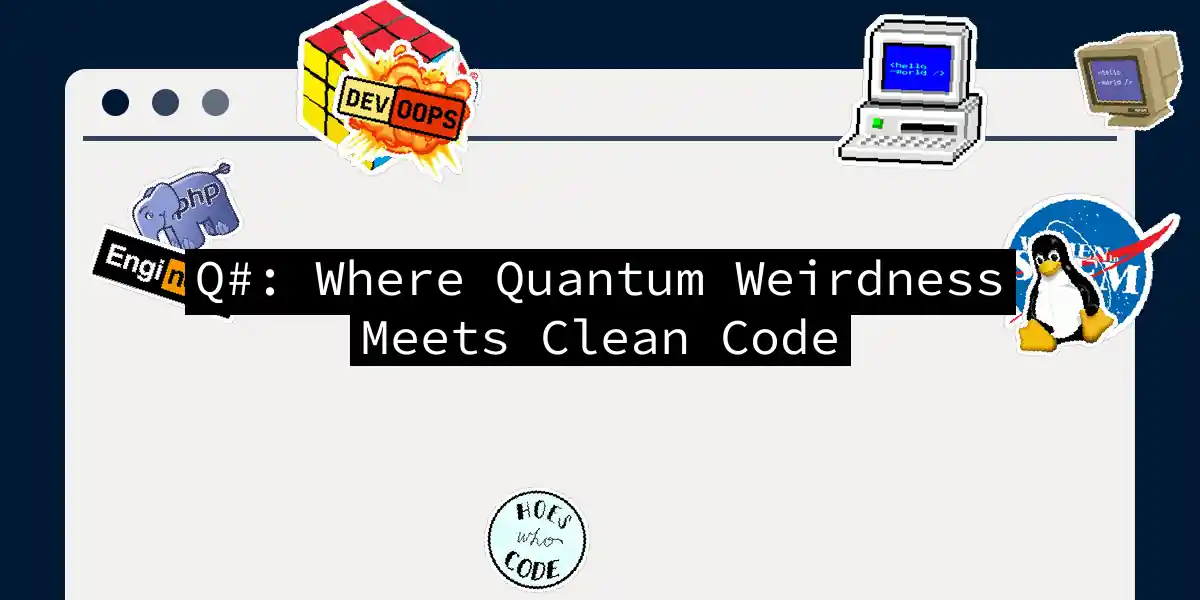Picture this: you’re standing in a quantum kitchen where your blender exists in 5 states simultaneously until you open the lid. Welcome to Q# programming - where we don’t just write code, we choreograph subatomic ballet routines. Let’s get our quantum fingers dirty.
Setting Up Your Quantum Playground
First, arm yourself with:
- .NET SDK (the Swiss Army knife of modern development)
- Visual Studio Code (with the IQ# extension for quantum superpowers)
- Quantum Development Kit (your ticket to the multiverse)
dotnet new console -lang "Q#"
Pro tip: If your installation fails, check if your computer isn’t actually a quantum version from an alternate reality. Happens more often than you’d think.
Q# Syntax in a Nutshell (That’s Also in Superposition)
Let’s break the ice with our first quantum operation:
operation QuantumGreeting() : Result {
use qubit = Qubit(); // Borrow a qubit from the quantum realm
H(qubit); // Put it in superposition - professional indecision
let result = M(qubit); // Peek at the quantum cookie jar
Reset(qubit); // Always clean up - quantum hygiene matters!
return result;
}
This code creates a quantum coin flip. The H operation (Hadamard) is like giving your qubit an existential crisis - it becomes both 0 and 1 simultaneously.
Entanglement: Quantum BFFs
Let’s create Einstein’s “spooky action at a distance” with a Bell pair:
like quantum twins
Here’s the code that makes this magic happen:
operation CreateBellPair() : (Result, Result) {
use (q1, q2) = (Qubit(), Qubit());
H(q1);
CNOT(q1, q2);
let r1 = M(q1);
let r2 = M(q2);
ResetAll([q1, q2]);
return (r1, r2);
}
When you run this, you’ll either get (Zero, Zero) or (One, One) - perfect correlation that would make even soulmates jealous. It’s like quantum couples therapy, but with fewer arguments about who left the qubit gate open.
When Q# Meets Python: Quantum Snake Charming
Combine classical and quantum computing with Python integration:
from qsharp import compile
compile("MyQuantumProgram.qs") # Quantum transpilation party!
def run_quantum_coin_flip():
return QuantumGreeting.simulate()
print("Quantum result:", run_quantum_coin_flip())
This is where Python becomes the ultimate quantum wingman - handling classical chores while Q# does the quantum heavy lifting.
Pro Tips for Quantum Cowboys
- Qubit Etiquette: Always
useandResetqubits - we don’t want quantum littering - Measurement Zen: Measure once, but in superposition you measure all possible outcomes simultaneously (mind = blown)
- Quantum Debugging: If your code works on the first try, you’ve definitely broken reality
Conclusion: Your Quantum Journey Begins
You’ve now got the tools to create quantum states that would make Schrödinger’s cat pause mid-meow. Remember, every great quantum programmer started by accidentally creating a black hole in their first simulator. Ready for more? In our next article, we’ll explore quantum teleportation - because sometimes email attachments just aren’t fast enough. Until then: May your qubits stay entangled and your measurements be favorable. Just don’t try to simulate your cat - we’re not ready for that particular apocalypse.
